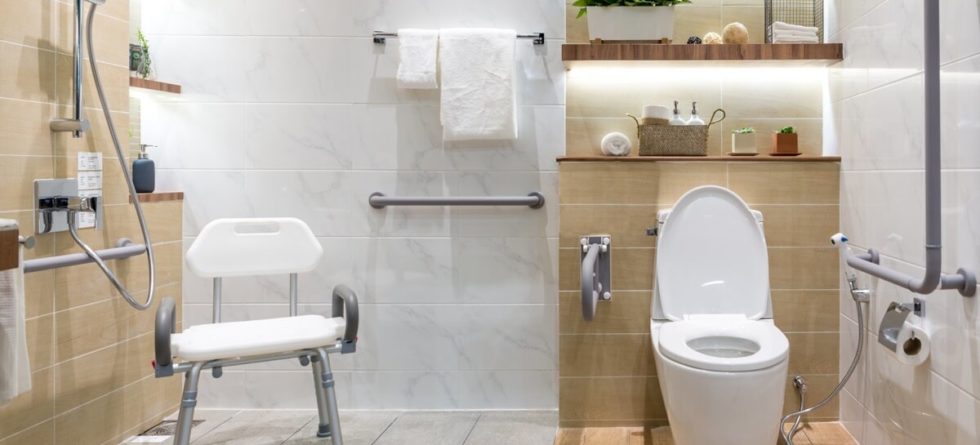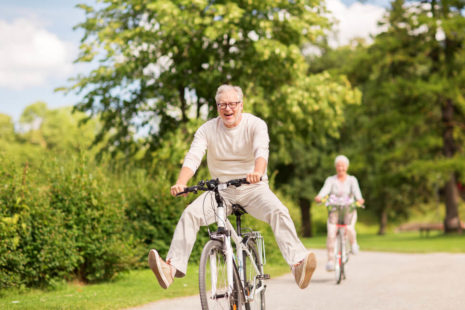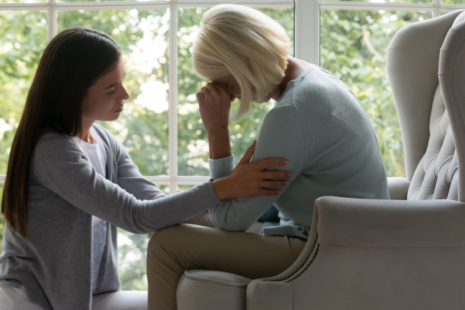Growing older at home is a dream that many aging adults don’t want to give up, regardless of their condition and health challenges. Recent studies show that more seniors are choosing to age in place than ever before.
Many aging adults decide to stay in their homes where they have spent decades working, raising children, and creating many warm memories. Besides, technology and availability of services are making it easier for aging adults to age in place and maintain independence. Also, the high costs of retirement communities and assisted living cause many seniors to opt for aging at home.
Home modifications for seniors allow many mature adults to safely age in place and maintain their independence for as long as possible. By implementing home modifications in your house, you’ll make your home more functional and safer to stay in it longer.
Below, you’ll find useful tips on home modifications that can help you safely age in place.
1. Clear Your Home
Make sure you get rid of any unnecessary furniture or rugs. Also, take care that the pathways around your home are clear and free of items you may bump into. Have the clutter in the garage and your rooms (even those you don’t spend a lot of time in) cleared and organized?
2. Make Your Home Easily Accessible
Ensure that there is at least one no-step entry in your home. This may require some construction work, but it will pay off in the long run. That is, this adjustment will make entering your house and maneuvering around it much easier and safer.
3. Update Your Bathroom
Remodeling a bathroom is one of the key aspects of remodeling for aging in place. Of course, remodeling a bathroom takes both time and money. However, if you want to age in place, it can be very useful to have a comfortable and safe bathroom as your needs change.
Install a walk-in tub, large enough that can accommodate a place to sit down. Put up railings and grab bars to provide stability and safety. If possible, have a bathroom on the first floor. Make sure you have non-slip floors, mats, and rugs in the bathroom.
4. Remodel the Kitchen
A kitchen is a place when we spend a large amount of time. the kitchen should always be located on the main floor. When remodeling your home for aging in place, keep the kitchen floors a priority. Any floor covering in your kitchen should be non-slippery, but try to avoid carpets and rugs altogether. Also, floors like wood, laminate, or vinyl are usually much better options than tiles, stone, or marble.
Remodel the kitchen cabinets so they are easy to reach. Add pull cabinets as they provide easy access to the items in the back of the shelf. Make sure that the lighting reaches all the parts of your kitchen and that light switches are accessibly placed and easy to use.
5. Install an Electric Stair Lift
Safety is a major concern when living alone. If you suffer from conditions such as muscle atrophy or arthritis, installing an electric stairlift may be a good idea. Or, if you simply have a fear of falling down the stairs when you’re at home alone, the lift will provide you with a sense of security and safety.
6. Move Downstairs
If you live in a two-story home, think about moving your master bedroom downstairs. This will make your home more functional and help you move around your house as easy as possible. Think about combining the smaller rooms onto the first floor into an open space that is easy to navigate.
7. Consult a Professional
There are skilled contractors trained in remodeling homes for seniors, known as Certified Aging-in-Place Specialists or CAPS. Consider calling in a specialist trained to do the modifications for aging in place and have your home professionally adapted to your needs.
8. Widen the Doors
If you use a wheelchair or a walker to move around, you’ll have to widen the framed door openings and install wider doors and trims. Widening your door may be expensive, but it will help you to age in place and move around your home safely.
9. Keep the Exterior Walkways Safe
Uneven walkways around your home increase the risk of outdoor falls and serious injuries. So, ensure that your walkways are smooth and regularly maintained. Also, trees and bushes should be trimmed and off the walkway. Make sure all cracks and bumps are fixed and removed from your walkways.
10. Choose Wall Colors that Promote Peacefulness
Studies show that the way you organize your living space can have a huge impact on your mood, your thoughts, and your mental health in general. An easy trick you can use to promote happiness and relaxation in your home is choosing the right wall colors. Research has proven that when your eyes are looking at the colors, your brain releases neurochemicals that impact your mood and your overall well-being.
Wall colors can help reduce stress and promote relaxation. So, using different wall colors is a creative way to improve your mood and promote harmony at home. For example, white, blue, and green surroundings have the effect of calming down and promoting relaxation.
11. Make Sure There is a Phone Access Throughout the Home
If you are not used to or don’t want to carry a cell phone in your pocket, it is a good idea to have phone extensions in every room. Also, make sure the phones are placed in easily accessible spots around the house.
12. Update Door Handles
Replace traditional handles with D-shaped handles or loop handles as these provide a better grip and stability.
13. Make Your Home Brighter
Aging people, especially those with dementia need twice as much light as the recommended standard, as dark spots may appear threatening and confusing. Making your rooms brighter will help you see your surroundings clearer but it will also positively affect your mood.







